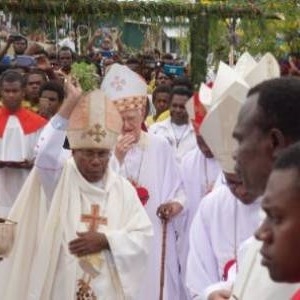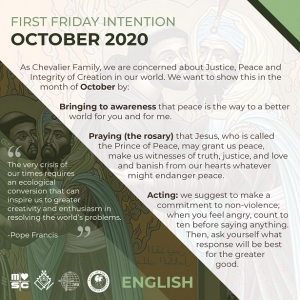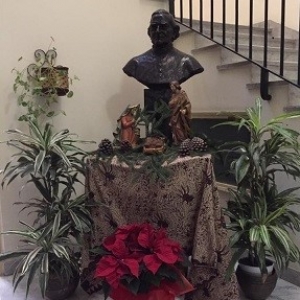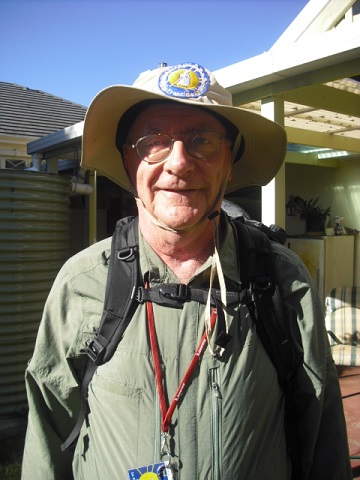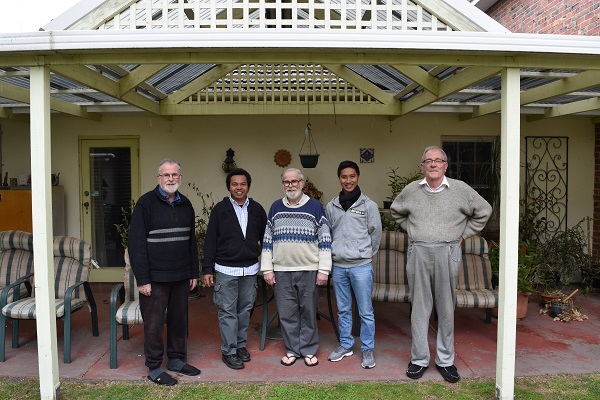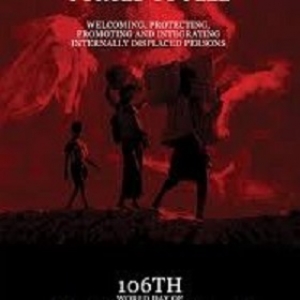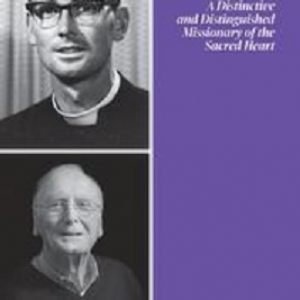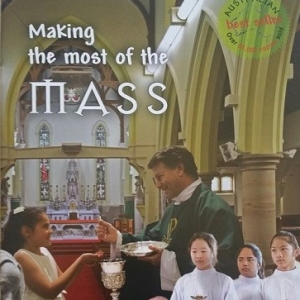Peter MALONE
Rochus Tatamai MSC, Installation, Rabaul – report, homily, photos.
Rochus Tatamai MSC, Installation, Rabaul – report, homily, photos.
The ceremony of Installation of the 8th Archbishop of Rabaul, Abp Rochus Josef Tatamai MSC, was a great gathering of well over hundreds of priests, nuns, the Apostolic Nuncio, Sir John Cardinal Ribat, 15 archbishops and bishops, as well as many, many parishioners.
The date was set for 29th of September, the Patron Saint of PNG, Archangel Michael. More importantly, it was also the date when, 138 years ago, the first three MSC missionaries arrived on Matupit Island. Today’s celebration featured a glorious liturgy, angelic singing, inspiring speeches and testimonies expressing appreciation for the work of the missionaries. Many praises were spoken about the work of the outgoing Abp. Francesco Panfilo SDB and we thanked him deeply for his work among us. Pope Francis and the Nuncio were thanked and blessed for appointing a true son of this land to the new role of Archbishop of Rabaul.

After the formal celebrations a colorful, lively and powerful presentation of cultural groups took place. It is always amazing to see the richness of PNG culture which is absolutely unique in the world. Congratulations to Abp. Rochus J. Tatamai, MSC and the people of ENB for the amazing day of celebrations in the history of The Catholic Church and PNG.

________________________________________________________________________
Vunapope, Rabaul, Papua New Guinea, 29 September 2020 -- A grand Installation Mass of the first local and 8th Archbishop of the Catholic Archdiocese of Rabaul, His Grace Rochus Josef Tatamai MSC was held on Tuesday 29th September, at the Vunapope Sacred Heart Cathedral, East New Britain Province. 29th September is the feast day of the Archangels and St Michael is the patron saint of Papua New Guinea.
The Installation had as its theme: “God Wantaim Yumi”. Archbishop Rochus Tatamai was the main celebrant. Concelebrating with him were 14 bishops. Amongst them were the Apostolic Nuncio to PNGSI, Archbishop Kurian Mathew Vayalunkal; Sir John Cardinal Ribat MSC; Archbishop Emeritus, Francesco Panfilo SDB; and a large number of priests. Also present were religious, seminarians, family and friends and the people of the Archdiocese of Rabual and the other dioceses.

Abp Tatamai served the Diocese of Bereina for eleven years since 2007, the diocese of Kavieng for two years since 2018, before his appointment as the Archbishop of Rabaul. He is a direct descendant of Blessed Peter ToRot.
In his homily Abp Rochus gave thanks to God for the years and experience as Bishop of the dioceses of Bereina and Kavieng. He compared his return to Rabaul similar to that of Jesus’ return to Nazareth. “Jesus returned to Nazareth and was judged by the people for what he did. There will be those who will judge and question my decisions, but all I ask for is your cooperation and patience as you allow me to lead as your new Shephard,” he said.

He reminded the people to continue to support the Church in their efforts to drive forward the Province and its people. He urged parents to pray and encourage their children to live a Holy Life in the Church. “Pray for our children, that they become people of faith and remain in the service of the Church as Catechists, Seminarians and as Religious,” he said. He highlighted not only quantity but quality of vocations.
He stressed the need for the archdiocese to become more inclusive in its efforts of improving its quality to effectively deliver its diocesan pastoral plan among its people. He thanked Archbishop Panfilo for his inclusive thrust of reaching out in a special way to the people in Pomio, where he established 7 new parishes. He thanked him for his stress on education, youth ministry, family ministry, vocations and the different social issues faced by the people. He thanked Archbishop Karl Hesse who stabilized the archdiocese after the volcanic eruption.

At the start of the celebration, the Apostolic Letter of Pope Francis, was read and displayed to all. Thousands of Catholic faithful from the three deaneries of Rabaul, Pomio and Kokopo were present together with many who travelled from as far as the Dioceses of Kavieng, Kimbe and other dioceses of Papua New Guinea to be present for the celebration. The Vunapope parish choir led the singing and the dances were by the Diocese of Kavieng and the Vunadirdir parish.
After the Eucharistic celebration speeches and a variety of items were presented. These included a march past by the students and Vunapope Catholic Women, traditional dance performances from the Baining and Pomio areas of Rabaul, and a variety of dances from the Dioceses of Kavieng and Kimbe.

Several amongst the gathering thanked Archbishop Panfilo and spoke joyfully of the new archbishop. Patricia Novena, a housekeeping maiden, with joyful tears in her eyes said that the installation of the first local Archbishop was not just a milestone for the Church but for the people of ENB Province. “I am grateful for the grace and power of God. I am blessed to be part of this generation witnessing this significant event for the Archdiocese,” she said.
Allister Tavtavun, from Rabaul, described the installation as ‘historic’ as this was the first time a local was appointed to such a prestigious role in the hierarchy of the Catholic Church. “The previous seven Archbishops were expatriate missionaries and this is the first time that one of our own, born and raised up here, has taken up this elevated position of the Church,” he said.
The Catholic church was established 138 years ago on Matupit island. Many missionaries lived and proclaimed the faith. Several died of exhaustion, malaria and were even martyred for their faith.

_______________________________________________
Rabaul (Agenzia Fides) - "I thank God for the years passed and the pastoral experience in the dioceses of Bereina and Kavieng. I return to Rabaul as Jesus returned to Nazareth: here he was judged by the people for what he had done. There will be those who will judge and will question my decisions, but all I ask is your collaboration and patience to allow me to lead the community, with the light and grace of God, as your new Pastor": with these words Mgr. Rochus Josef Tatamai MSC, new Archbishop of Rabaul, addressed the faithful at the solemn inauguration Mass as the eighth Pastor of the archdiocese. As reported to Fides by the Communications Office of the Bishops' Conference, the local community warmly greeted and welcomed the first local Archbishop at the solemn celebration, held on September 29, in the Cathedral of the Sacred Heart of Vunapope, in the province of Eastern New Britain. The Apostolic Nuncio in Papua New Guinea and the Solomon Islands, Archbishop Kurian Mathew Vayalunkal, Cardinal John Ribat, MSC, Archbishop Emeritus Francesco Panfilo, SDB, and a large number of priests, religious and lay faithful who came from different dioceses and provinces were present.

Archbishop Tatamai, who served the diocese of Bereina for eleven years and the diocese of Kavieng for two years, since 2018, is a direct descendant of Blessed Peter ToRot, catechist and martyr, a reference figure for the Catholic community in Papua.
Addressing the families, the Archbishop urged parents to pray and encourage their children to "live a holy life in the Church". "Pray for your children, so that they become people of faith and remain at the service of the Church as catechists, seminarians and religious".

He then underlined the need for the archdiocese to become more inclusive in its efforts to improve the quality of the apostolate and pastoral action. Thanking his predecessor, Archbishop Panfilo, former ordinary, especially for the evangelizing action in the area of Pomio, where he founded 7 new parishes, recalled his commitment to education, youth ministry, family ministry , pastoral care for vocations and the various social issues addressed.
People particularly appreciated the fact that the community has, for the first time, an Archbishop from the same area. "The installation of the first local Archbishop was not only a milestone for the Church, but for the whole province. It is a very important and significant step. We are grateful to God for this gift", said Patricia, a lay Catholic present. The previous seven Archbishops were missionaries, while "this is the first time that one of us, born and raised here, is called to lead the Church", he noted.

During the celebration dances of local cultures were carried out and there was a tribute to the missionaries who founded the first mission, 138 years ago, on the island of Matupit. Many missionaries lived and proclaimed the faith. Many died of malaria or were martyred for their faith.
Papua New Guinea has 6 million inhabitants and is a "Christian country", as is written in the Constitution, born after independence: 95% of Papuans are baptized in the many Christian Churches present, of different denominations. Catholics are about 27%.

Chevalier Family; Justice and Peace and First Friday intentions
Chevalier Family; Justice and Peace and First Friday intentions
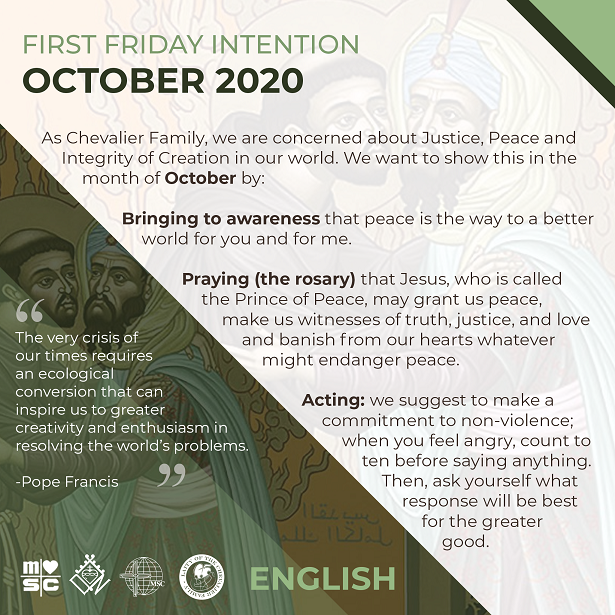
The focus for October is Peace – and the challenge to us in our daily lives of commitment to non-violence
and remembering those who lived (and died) for non-violence.
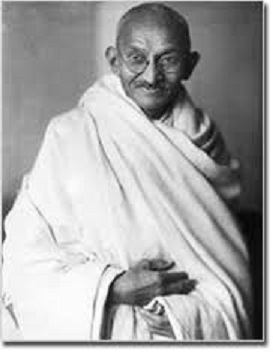
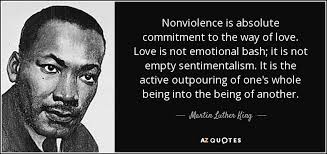
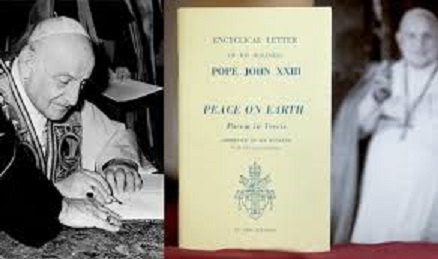
Beginning our eighth covid lockdown month, October. Some mind-alerting moments.
Beginning our eighth covid lockdown month, October. Some mind-alerting moments.
Some months ago, this cartoon appeared – 'The Official Mascot for 2020' reminding us of how clever anagrams can be.

For example: Take Chris McPhee, for instance. Monkeying with the letters we get:
Chimps cheer or Chimp cheers!
This set was published earlier in the year:
ANAGRAMS
Also one I heard on the radio this morning : coronavirus - carnivorous.....
|
Some significant October days for the Chevalier Family, 2020
Some significant October days for the Chevalier Family, 2020
Many of the significant October days are part of the life of Jules Chevalier, not only the anniversary of his death, October 21st but other days: his vision of the role of the laity in the MSC, his resignation, his anointing.
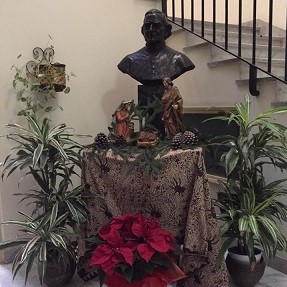
1 October, 1905
The MSC Generalate transfers from Belgium to Rome, Piazza Navona, the site of the first MSC house in Rome. No longer the Generalate, but the Church and Shrine of Our Lady of the Sacred Heart, Piazza Navona, continues to draw pilgrims from all over the world and continues to be served by the MSC today.
2 October, 1901
The MSC Generalate, expelled from France, is established at Remy-lez-Chimay in Belgium.
3 October, 1901
Father Founder resigns as Superior General. French MSC, Father Arthur Lanctin succeeds him as General (1901-1905). Father Lanctin is also buried in the Crypt in Issoudun.
3 October, 1918
Death of Father Emile Maugenest, O.P., co-founder of the MSC Society. Maugenest had been compelled to leave Issoudun and the MSC's in 1857 in obedience to the Cardinal Dupont, Archbishop of Bourges who appointed him as Archpriest of Bourges Cathedral. He later entered the Dominicans, but remained on good terms with the MSC and was at Father Chevalier's side in 1904 for the celebration of the 50th anniversary of the MSC Society.
![]()
4 October, 1904
The old Third Order becomes "The Society of Souls Consecrated to the Cult of the Sacred Heart of Jesus", a title suggested by Rome. Chevalier had envisioned this branch, not so much as a work of the MSC's, but as an extension of it into the laity. However, this original vision was lost when the MSC General Chapters of 1905 and 1907 rewrote the 1877 Constitutions. The re-written text gave the impression that the MSC Society consisted solely of religious priests and brothers.
5 October, 1922
Father Hubert Linckens, MSC, first Provincial Superior of Germany (1897-1910) and historical founder of the MSC Sisters, dies in Hiltrup, Germany. Linckens guided the MSC Sisters until 1911 at which time he became the first General Assistant of the MSC in Rome, and in this capacity lived in Australia from 1914-1920. Because World War I, he couldn't return to Italy and therefore stayed in Australia, during which time he helped in the up-building and promotion of the Australian MSC Province.
9 October, 1907
Fr. Chevalier receives the Anointing of the Sick, administered by Fr. Hériault in the presence of his confreres, some FDNSC Sisters and M. Bernard de Bonneval, in whose home he was living after having been expulsed from his presbytery in January of the same year.
10 October, 1867
Inauguration of the Apostolic School at Chezal-Benoît.
11 October, 1953
For the first time since the death of Fr. Founder, an MSC parish priest is installed in the parish of Saint Cyr, Issoudun. The parish priest of Saint Cyr continued to be an MSC until 2010 when it was again handed over to the diocese. However, today there remains an MSC presence with Vicars Fathers Joseph Desbois (Fr) and Lazare Elenge (DRC).
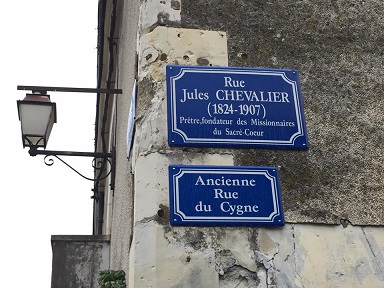
14 October, 1853
Father Jules Chevalier is transferred as curate from Châtillon-sur- Indre to his third parish, Aubigny-sur-Nère. The following year, on 21 October, 1854, he would go to Issoudun and remain there until his death, exactly 53 years later to the day.
15 October, 1906
Because of the expulsions, Father Chevalier authorizes the transfer of the FDNSC Generalate and novitiate to Thuin, Belgium.
17 October, 1872
Consecration of France to Our Lady of the Sacred Heart.
17 October, 1884
Departure of the first five FDNSC from Issoudun to the mission of Melanesia.
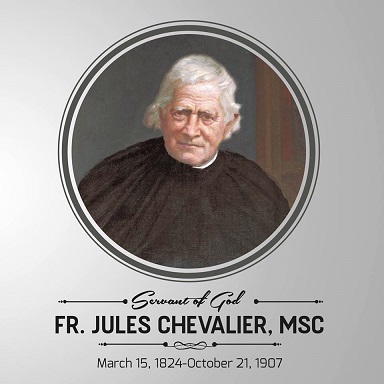
21 October, 1907
Death of Father Chevalier, founder of the MSC, the FDNSC and spiritual founder of the MSC Sisters. He is buried in the Crypt in the Basilica on the 24 October, 1907.
27 October, 1913
Monsignor Couppé founds the Congregation of the Daughters of Mary Immaculate (the FMI Sisters) the first local Congregation of Sisters founded in PNG.
Their formation is entrusted to the FDNSC Sisters.
Acknowledging Paul Castley MSC, 85
Acknowledging Paul Castley MSC, 85
Paul at a Chapter 2016 Eucharist
Paul Castley is a Queenslander, Townsville and Brisbane. He made his first profession, February 26th 1955. His studies were at Sacred Heart Monastery, Croydon. He was ordained in St Stephen’s Cathedral, Brisbane, June 29th 1961.
After a year in Randwick parish, he taught at Monivae for most of the 1960s. He then served in parishes, Hindmarsh, relieving in Park Orchards, Camp Hill. He spent 1978 at St Paul’s National Seminary. In 1981, he moved to Sacred Heart Monastery, Croydon, working in pastoral supervision and training in CPE, Clinical Pastoral Education, then spending two years at Navarre House, Drummoyne.. He supervised courses in CPE at the Heart of Life Centre, Melbourne as well as at the National Pastoral Institute.
Pilgrim
He has walked the Via Francigena in 2011, has walked the Australian Camino from Portland to Penola, and has twice walked the Camino, in Spain in 2015, and through Portugal in 2018.
He has continued this pastoral work in Melbourne, based at the MSC House in Kew, part of the team for the Spiritual Leaders program at Heart of Life in 2019-2020.
Hung, Trieu and Kew Community 2018
Rochus Tatamai tp be installed as Archbishop of Rabaul.
Rochus Tatamai tp be installed as Archbishop of Rabaul.
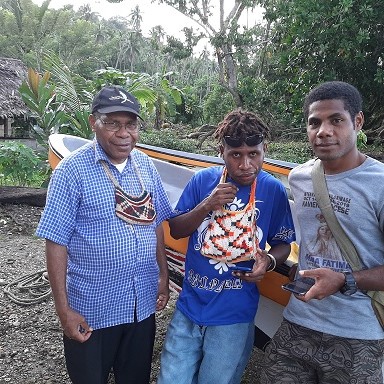
Tuesday, September 28th, will see the installation ceremony in Rabaul. The German MSC were the initial missionaries in New Britain – and provided the early bishops, including Bishop Leo Scharmach who was imprisoned with MSC, OLSH, MSC Sisters in Ramale Valley during the war.
Rochus is a media man (and still afficianado of Facebook), a producer of radio and television programs in Port Moresby, spending some years in Issoudun at the basilica, briefly PNG Provincial, then bishop in Yule Island, more recently in Kavieng. And, an MSC is once again Archbishop of Rabaul.
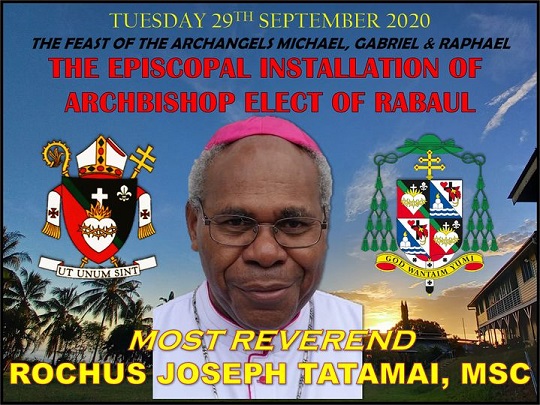
World Day of Migrants and Refugees, September 27th
World Day of Migrants and Refugees, September 27th.
The last Sunday of September of every year is World Day of Migrants and Refugees.
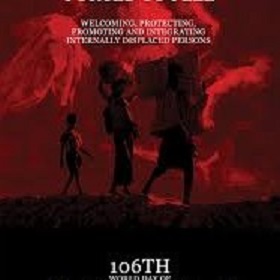
For 2020, Pope Francis has chosen the theme “Forced like Jesus Christ to flee”, with a focus on the need for the pastoral care of internally displaced persons.
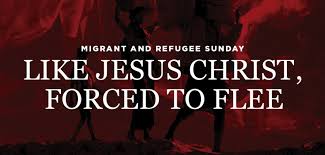
The Bishop Delegate for the Pastoral Care of Migrants and Refugees has encouraged Catholics to see in the Scriptures and in Pope Francis’ example the Christian imperative to care for those “on the move”.

Archbishop Christopher Prowse, in a letter for this Sunday’s World Day of Migrants and Refugees, said the understandable focus on the COVID-19 pandemic must not distract people from another ongoing crisis.
“Global migration is a major challenge for much of today’s world and a priority for the Catholic Church,” he wrote.
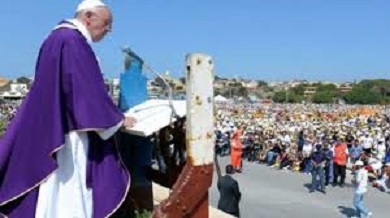
Pope Francis at Lampedusa
“In words and deeds, Pope Francis repeatedly shows his deep compassion for all who are displaced. Witness his encounters with migrants and refugees on the islands of Lampedusa and Lesbos. Witness his call for their full embrace: to welcome, to protect, to promote and to integrate migrants, refugees and victims of human trafficking.”
Those four verbs – welcome, protect, promote and integrate – have been a constant refrain for the past three years, after they formed the basis of Pope Francis’ 2018 message for the World Day of Migrants and Refugees.
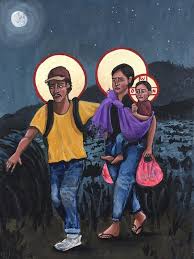
Archbishop Prowse said the biblical image of the flight into Egypt of Jesus, Mary and Joseph has been the inspiration of many statements of the Catholic Church on various aspects of migration.
“Like an icon of so many of the displaced, the Holy Family represents people ‘on the move’,” Archbishop Prowse wrote.
“The Church stands alongside the fragilities and dangers of the millions attempting to find a dignified home in the world.”
Paul Stenhouse MSC: A Book of Tributes.
Paul Stenhouse MSC: A Book of Tributes.
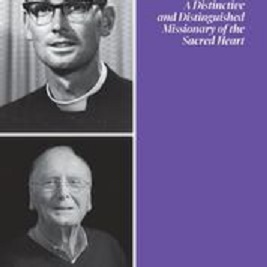
Australian Scholarly Publishers are about to release a book of tributes to Paul Stenhouse. It is called, Paul Stenhouse, a Distinguished and Distinctive Missionary of the Sacred Heart. It can be ordered from the publishers, details below.
The range of tributes can be seen in the Contents.
The photos on the cover of this tribute to Paul Stenhouse MSC show the enthusiastic young priest, aged 27, his life in ministry before him, then the veteran older priest, aged 83, living with illness but over half a century of generous outreach achieved.
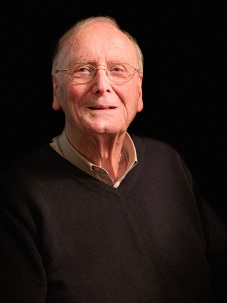
CONTENTS
Foreword: Chris McPhee
PAUL STENHOUSE - MSC
Michael Fallon: Eulogy for Paul
Random Memories, Paul's early life.
Jim Littleton: Paul as an MSC
Peter Malone: A Personal Memoir
Tricia Kavanagh: Memories and Connections
Anthony Brereton: A Memory
John S. Madden: Recollections
Annals: Paul’s own overview
PAUL STENHOUSE – PRIEST-SCHOLAR
Karl Schmude: Priest-Scholar
Wanda Skowronska: Extraordinary Scholar, Writer, and Witness to Eternity
Greg Sheridan: Good Polymath, Good Pastoral Priest
Marek Jan Chodakiewicz: Samaritan Studies
Tony Abbott: Islam
Piers Paul Read: Islam
Michael Wilding: John Farrell
PAUL STENHOUSE – MINISTRY
Philip Collignon: Aid to the Charity Church in Need
Johannes Freiherr Heereman von Zuydtwyck
Regina King
Project Section Co-worker, Germany
Neville Kyrke Smith
Joseph Assaf: “Lebanon Is More Than A Country – It Is A Message”
Robert Teo: An Asian Ministry
Mary Ruth OLSH: The House of Mary
PAUL STENHOUSE - TRIBUTES
From the Annals Office:
Peter Macinante: Talk at the Annals Farewell Lunch
Hendrikus Wong: A Tribute
Greg Quinn: Annals Computer System
From Annals Contributors:
James Murray: The Stenhouse Irregulars
James Franklin: Hope is Not Lost
Michael Wilding: ‘Dipped in ink’
Christopher Dawson: Peerless and Fearless
Giles Auty: A Very Special Friend: Giles
R. J. Stove: Eight Men, Not One Man
A Tribute from Cardinal George Pell
[A sad note: Giles Auty died Wednesday September 23rd]
To order your copy please email, mail or telephone your order with the following information:
Title: Paul Stenhouse Price: $20.00 (plus $9 p&p within Australia)
Number of copies: Name: Delivery Address: Phone: Email: Payment: Cheque (made out to Australian Scholarly Publishing)
Visa Mastercard Amex Card Name: Number: ———— ———— ———— ———— Expiry date: —— / —— Signature
John Graham MSC: A True Missionary of the Sacred Heart by Priyo Susanto msc
John Graham MSC: A True Missionary of the Sacred Heart
by Priyo Susanto msc
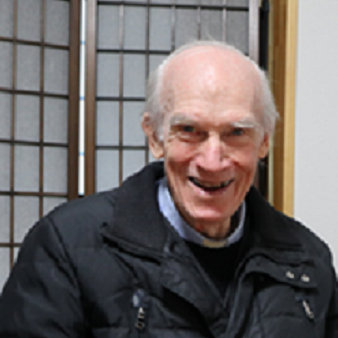
Earlier in the year John celebrated 50 years of priesthood. This weekend he celebrates his 82nd birthday. This article by the MSC community leader in Japan appeared in the MSC Magazine.
This year John Graham MSC is celebrating his golden jubilee, 50th anniversary of his ordination to the priesthood. He and his parish have been preparing a golden celebration in the parish. inviting the local bishop to celebrate the with a chrism Mass. He and his classmates have been preparing to celebrate the jubilee back in Australia. And the MSC Japan Region has been planning to have a community celebration in Nagoya. However, the COVID-19 pandemic disrupted all our plans.
Although he has always been interested in vocation to religious life, John joined the MSC when he was already 26 years old.
Graduated from Sydney University in 1959, John built his career in teaching mathematics and physics. He also, from an early age, has been attracted to the devotion to the Sacred Heart of Jesus. He said that he always had with him the picture of the Sacred Heart.
While studying at the university and then later while working as a high school teacher he joined the Aquinas Academy, a Catholic adult education for the Lay, run by the Marists. He nurtured his faith in this institution, but also was influenced by the Passionists through their retreats. He had with him the picture of Sacred Heart, educated in faith by Marists and spiritually led by the Passionists! And he decided to knock on the door of the MSC!
He entered the novitiate in 1964 and took his first vows in February 26, 1965. After the completion of his study in Philosophy and Theology he was ordained to the priesthood in May 9, 1970. His first ministry as MSC priest was teaching Math and Physics in the Chevalier College, from 1971 to 1973. The former Provincial Superior John Mulrooney was one of his students.
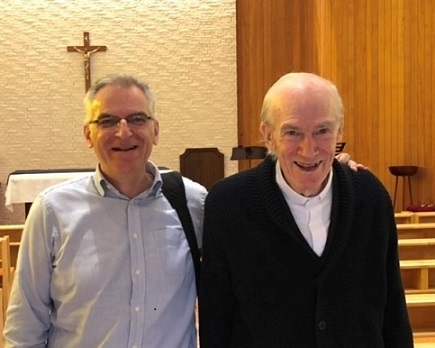
With Chris McPhee
His dream was as missionary to be sent to the mission. He applied to be sent to Japan, was granted and he was off to Japan in 1974. Since then, with his missionary zeal, he dedicated his life to the Japanese Church and the Japanese people. Learning a new language was not an easy task. He learnt his Japanese in a Japanese language school in Kamakura, and old city just south of Tokyo, a city in Kanagawa Prefecture for two years or so. After finishing the language school he came back to Nagoya and since then most of his missionary work were related to parish ministry, always in contact with the Catholics as well as the non-Catholics who came to the church searching for the truth. Despite facing many difficulties, he stayed faithful to his work, because he believes that it takes time to get used to the local language, culture and customs.
He has always drawn his strength to carry out his mission from the community of missionaries. He treasures the regular gathering and the sharing of prayers and experience. He treasures his commitment to the society, to the parish and to the people. He treasures the support from the parishioners with whom he works closely.
He is a true missionary. Though he has not seen results of his work in leaps and bounds such as the influx of people to the churches asking for baptism, he won’t give up in serving the people through his work of witnessing in parish and other charity involvements. He believes that Japan and Japanese church are still in need of the missionaries’ presence. True that the local priests are doing their best, but the spirituality side of the church is best shown by the religious missionaries. He believes that the missionary work has to be continued with the emphasis on promoting peace, since peace in the Christian belief has a universal value.
He is a true missionary of the Sacred Heart. It is his resolution that he has to continue to give witness to the love of the Sacred Heart. He feels the need to promote more the devotion to the Sacred Heart.

MSC in Japan 2019
Mark Hanns MSC, Ordination, Silver Jubilee
Mark Hanns MSC, Ordination, Silver Jubilee
Congratulations today to Mark Hanns MSC, 25 years of Priesthood.
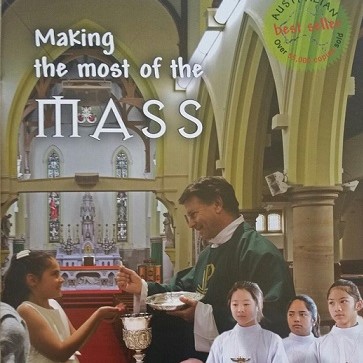
Cover of an Adelaide booklet on the Mass
Mark was a foundation member of the Formation House, Navarre, Drummoyne, in 1986. He was a ‘late vocation’, a Certified Electrician. He made his first profession, 23rd January, 1988. His studies were at St Paul’s National Seminary and the Catholic Institute, Sydney.
Mark’s appointments have included Monivae College, St John’s Kippax, St Mary’s Towers Douglas Park.
He participated in the Siloam, Spiritual Directors’ Program at the Heart of Life Centre.
In more recent years, he has been at Hindmarsh, SA, Moonah, Tasmania. At present he is Formation Director at Blackburn.
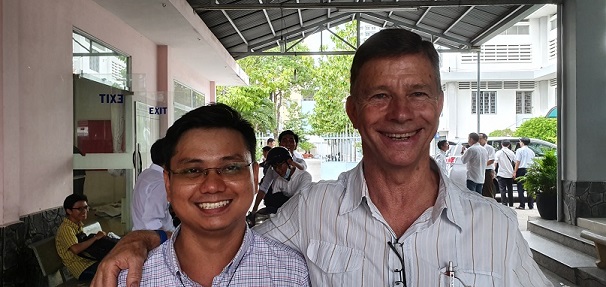
In Vietnam 2018 for Students' retreat
His celebration in this coronavirus year will be online this afternoon for the community, Lay MSC and friends.
